Cortico-basal ganglia networks subserving goal-directed behavior mediated by conditional visuo-goal association
- PMID: 24155692
- PMCID: PMC3800817
- DOI: 10.3389/fncir.2013.00158
Cortico-basal ganglia networks subserving goal-directed behavior mediated by conditional visuo-goal association
Abstract
Action is often executed according to information provided by a visual signal. As this type of behavior integrates two distinct neural representations, perception and action, it has been thought that identification of the neural mechanisms underlying this process will yield deeper insights into the principles underpinning goal-directed behavior. Based on a framework derived from conditional visuomotor association, prior studies have identified neural mechanisms in the dorsal premotor cortex (PMd), dorsolateral prefrontal cortex (dlPFC), ventrolateral prefrontal cortex (vlPFC), and basal ganglia (BG). However, applications resting solely on this conceptualization encounter problems related to generalization and flexibility, essential processes in executive function, because the association mode involves a direct one-to-one mapping of each visual signal onto a particular action. To overcome this problem, we extend this conceptualization and postulate a more general framework, conditional visuo-goal association. According to this new framework, the visual signal identifies an abstract behavioral goal, and an action is subsequently selected and executed to meet this goal. Neuronal activity recorded from the four key areas of the brains of monkeys performing a task involving conditional visuo-goal association revealed three major mechanisms underlying this process. First, visual-object signals are represented primarily in the vlPFC and BG. Second, all four areas are involved in initially determining the goals based on the visual signals, with the PMd and dlPFC playing major roles in maintaining the salience of the goals. Third, the cortical areas play major roles in specifying action, whereas the role of the BG in this process is restrictive. These new lines of evidence reveal that the four areas involved in conditional visuomotor association contribute to goal-directed behavior mediated by conditional visuo-goal association in an area-dependent manner.
Keywords: action; executive function; globus pallidus; goal; sensorimotor integration; visuomotor integration.
Figures




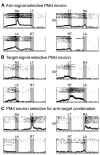
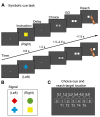
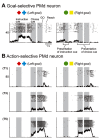


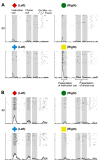
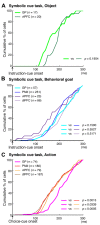
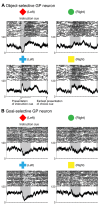
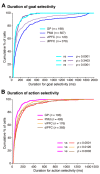
Similar articles
-
Involvement of the globus pallidus in behavioral goal determination and action specification.J Neurosci. 2013 Aug 21;33(34):13639-53. doi: 10.1523/JNEUROSCI.1620-13.2013. J Neurosci. 2013. PMID: 23966686 Free PMC article.
-
A spiking neuron model of the cortico-basal ganglia circuits for goal-directed and habitual action learning.Neural Netw. 2013 May;41:212-24. doi: 10.1016/j.neunet.2012.11.009. Epub 2012 Dec 5. Neural Netw. 2013. PMID: 23266482
-
Distinct information representation and processing for goal-directed behavior in the dorsolateral and ventrolateral prefrontal cortex and the dorsal premotor cortex.J Neurosci. 2012 Sep 12;32(37):12934-49. doi: 10.1523/JNEUROSCI.2398-12.2012. J Neurosci. 2012. PMID: 22973018 Free PMC article.
-
[Neural mechanisms underlying visually guided action].Brain Nerve. 2014 Apr;66(4):439-50. Brain Nerve. 2014. PMID: 24748092 Review. Japanese.
-
Conditional visuo-motor learning in primates: a key role for the basal ganglia.J Physiol Paris. 2003 Jul-Nov;97(4-6):567-79. doi: 10.1016/j.jphysparis.2004.01.014. J Physiol Paris. 2003. PMID: 15242666 Review.
Cited by
-
The Effects of Digital Addiction on Brain Function and Structure of Children and Adolescents: A Scoping Review.Healthcare (Basel). 2023 Dec 20;12(1):15. doi: 10.3390/healthcare12010015. Healthcare (Basel). 2023. PMID: 38200921 Free PMC article.
-
Postmortem transcriptional profiling reveals widespread increase in inflammation in schizophrenia: a comparison of prefrontal cortex, striatum, and hippocampus among matched tetrads of controls with subjects diagnosed with schizophrenia, bipolar or major depressive disorder.Transl Psychiatry. 2019 May 23;9(1):151. doi: 10.1038/s41398-019-0492-8. Transl Psychiatry. 2019. PMID: 31123247 Free PMC article.
-
Neural circuits: Japan.Front Neural Circuits. 2014 Nov 10;8:135. doi: 10.3389/fncir.2014.00135. eCollection 2014. Front Neural Circuits. 2014. PMID: 25426031 Free PMC article. No abstract available.
-
Getting stuck with pornography? Overuse or neglect of cybersex cues in a multitasking situation is related to symptoms of cybersex addiction.J Behav Addict. 2015 Mar;4(1):14-21. doi: 10.1556/JBA.4.2015.1.5. J Behav Addict. 2015. PMID: 25786495 Free PMC article.
-
Coupled versus decoupled visuomotor feedback: Differential frontoparietal activity during curved reach planning on simultaneous functional near-infrared spectroscopy and electroencephalography.Brain Behav. 2022 Jul;12(7):e2681. doi: 10.1002/brb3.2681. Epub 2022 Jun 14. Brain Behav. 2022. PMID: 35701382 Free PMC article.
References
-
- Alexander G. E., Crutcher M. D. (1990b). Neural representations of the target (goal) of visually guided arm movements in three motor areas of the monkey. J. Neurophysiol. 64 164–178 - PubMed
-
- Alexander G. E., Crutcher M. D. (1990c). Preparation for movement: neural representations of intended direction in three motor areas of the monkey. J. Neurophysiol. 64 133–150 - PubMed
Publication types
MeSH terms
LinkOut - more resources
Full Text Sources
Other Literature Sources
Research Materials

